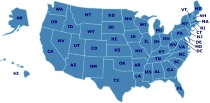Teaching Different Learning Styles
Do you know how your child learns best? If so, then you've identified his or her learning style. Discovering and understanding your child's learning style can help make homeschooling easier, more productive, and more successful. Each learning style has strategies that work to help your child learn in a way that enhances creativity and knowledge acquisition. These resources include quizzes to identify learning styles and tips for approaching different learning styles for maximum success.
Understanding Your Child's Learning Style
For the Learners' Sake: Brain-Based Instruction for the 21st Century
Homeschooling Students With Different Learning Styles (Visual, Read/Write, Auditory and Kinesthetic)
Do you know how your child learns best? If you're not sure, this guide can help you figure it out. Because people learn in different ways, with diverse ways of capturing information and processing knowledge, you'll be more successful in your homeschooling if you can understand these particular learning styles for your children. Responding to your children's learning styles will help both them and you become more effective and enthusiastic about learning in your home. This guide helps you understand visual learning styles, auditory learning styles, reading/writing learning styles, kinesthetic learning styles, and offers information and tips to get the most out of your understanding of your own child.
7 Tips for Homeschooling Different Learning Styles
This explanation guide details the seven different learning styles: visual, auditory, kinesthetic, linguistic, logical, solitary, and social. People usually are a combination of more than one learning style. Implementing teaching and learning methods to respond to these styles can benefit homeschooling. These tips will help you integrate an understanding of learning styles into your homeschooling.
The Seven Learning Styles
100 Top Picks For Homeschool Curriculum: Choosing The Right Curriculum And Approach For Your Child's Learning Style
Cognitive Styles and Learning Strategies: Understanding Style Differences in Learning and Behaviour
In Their Own Way: Discovering and Encouraging Your Child's Multiple Intelligences
Understanding Learning Styles...And Homeschooling Accordingly
Everyone learns differently. When you homeschool, it is very helpful to figure out the different ways that your children learn, process information, and retain knowledge. This will make teaching easier, and also reduces your child's frustration. Both will set you up for success. This guide details the Vark model of assessing learning styles for four identified ways of learning. Vark stands for visual, auditory, reading/writing, and kinesthetic. It further explains three additional learning styles identified by developmental psychologist Howard Gardner. This is called the theory of Multiple Intelligences: logical-mathematical, social, and solitary.
Explore Learning Styles
Knowing and identifying differing learning styles is important both for your child and for you, as it impacts both your teaching style and your child's learning style. An awareness of these learning styles can come from identifying your passions and evaluating abilities. This guide walks through the skills and abilities of differing learning styles and talks about testing issues, encouragement methods, and how to choose curriculum for different learning styles.
Different Brains, Different Learners: How to Reach the Hard to Reach
Arm yourself with powerful knowledge for solving difficult learning problems; and discover specific how-to strategies for turning a borderline student into a confident achiever.
Learning Styles: Reaching Everyone God Gave You to Teach
How to Determine Your Child's Learning Style
In Their Own Way: Discovering and Encouraging Your Child's Multiple Intelligences
Discover Your Child's Learning Style : Children Learn in Unique Ways - Here's the Key to Every Child's Learning Success
Discovering Your Child’s Learning Style
Everyone has their own preferred way of learning. Learning styles can be generally divided into three types: visual, auditory, and kinesthetic learning styles. Discovering your child's learning style will be of benefit to both your child and to you too. By understanding these learning styles, you can better choose curriculum and plan out a strategy that will work best for you and your child.
The Way They Learn
Quiz: What's Your Child's Learning Style?
Knowing and understanding your child's learning style is the key to homeschooling success. This short quiz will help you determine what ways of learning are best for your child.
How To Identify Children’s Learning Styles
An appreciation of your child's primary learning style will help you support them in learning at home. It is also important to understand your own learning style if that is different from your child's. First, identify your own learning style of one of the four primary types: visual learner, kinaesthetic learner, auditory learner, and logical learner.
How to Determine Your Child's Learning Style
Children process information and learn in different ways. There are three primary ways in which people learn: visual, auditory, and kinesthetic. When you discover how your child learns, you can help shape their educational experience to prioritize this primary learning style, while also ensuring a well-rounded education.
Learning Styles: Reaching Everyone God Gave You to Teach
Discover Your Children's Gifts
This comprehensive work on children's learning styles and creativity expression is a tremendous help to parents as they begin homeschooling. The authors discuss how God gifts children in different ways with different ways of learning and expression. This guide will help you identify your child's personality gifts and help them reach their full potential.
Determining Your Child's Learning Style
Most students use a combination of learning styles, drawing from the four main types: visual, auditory, reading/writing, and kinesthetic. Responding with the right approach to your child's learning style can make all the difference when it comes to your child learning, understanding, and remembering educational material. With understanding of your child's learning style, you can more effectively choose materials and methods to emphasize his or her strengths rather than work against them.
Featured Resources
As an Amazon Associate, we earn from qualifying purchases. We get commissions for purchases made through links on this site.













